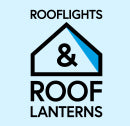Roof Lantern Flies: Causes & Fixes
Introducing a new roof lantern to your living space can undoubtedly enhance its aesthetic appeal, providing a cost-effective lighting solution that's sure to leave a lasting impression. However, along with the warmth and brightness, you might find an unwelcome presence—flies. In this exploration, we delve into the causes behind this issue and provide innovative solutions to keep your roof lantern-free from these pesky intruders.
The Curious Case of Flies in Your Skylight
Contrary to popular belief, flies don't possess a strategic plan to infiltrate your home. Instead, they are drawn in by the scent of food or hitch a ride on air currents created by opening and closing doors. Once inside, you may notice them congregating around your windows, skylights, or roof lanterns.
Understanding the Attraction
Warmth: Flies thrive in warm weather, and your windows and sills offer a cosy spot bathed in sunlight. Flies are particularly active when temperatures range between 29 to 35 degrees Celsius, making your home an ideal refuge.
Brightness: Flies perceive light differently then humans. Their compound eyes detect light and edges more keenly, leading them to congregate around the sunlit areas of your roof lantern or window.
Evicting Unwanted Guests: Solutions to Fly Infestations
- Light Traps and Bug Zappers: Harness the power of UV rays with light traps and bug zappers. These devices attract flies and other insects, electrocuting them upon contact and providing an efficient disposal method.
- Fly Paper: Featuring bright colours and a sweet-smelling coating, fly paper entices flies and acts as a glue, capturing and incapacitating them effectively.
- Fly Spray: Offering a quick solution, the fly spray contains toxins similar to those found in fly paper. It provides immediate relief by eliminating flies on contact.
- Fly Swatter: For a hands-on approach, a swift motion with a fly swatter can instantly eliminate any pesky flies.
- Hang Nets: Installing a hanging net or screen in front of your windows acts as a deterrent, discouraging flies from congregating in the first place.
- Maintain Cleanliness: A clean living space minimises the reasons for flies to enter. Regular cleaning, especially around food scraps and pet waste, can significantly reduce the likelihood of a fly invasion.
Our Selection of Roof Lanterns
Explore our diverse range of roof lanterns, including:
Additionally, discover our impressive collection of rooflights and skylights, such as opening rooflights, roof windows, fixed rooflights, pyramid skylights, and custom rooflights.
Tackling Flies Beyond the Roof Lantern
If you're battling a fly invasion in your conservatory, consider addressing common culprits:
- Open doors and windows
- Poorly sealed gaps
- Uncovered food and drinks
- Plants and flowers
- Moisture and humidity
- Stagnant water
- Decaying organic matter
A Strategic Approach to Fly Infestation
Follow these steps to bid farewell to unwanted flies:
- Identify and eliminate the primary breeding grounds.
- Clean and declutter your space thoroughly.
- Seal gaps, cracks, and holes to prevent entry.
- Use fly traps and fly paper strategically.
- Employ natural repellents like eucalyptus, lavender, and peppermint.
- Manually remove flies with swatters and zappers.
- Eliminate breeding sites and stagnant water.
- Implement fly baits.
- Call in professional pest control if needed.
- Adopt preventive measures through regular cleaning and vigilant checks for breeding sites.
Citronella's Limited Role
While citronella is renowned for repelling mosquitoes, its effectiveness against flies is limited. Consider alternative methods for deterring these airborne nuisances.
In conclusion, keeping your living space fly-free involves understanding their attraction and employing a combination of preventive measures and targeted solutions. By doing so, you can enjoy the benefits of your roof lantern without the unwelcome company of buzzing pests.
- Moshin






